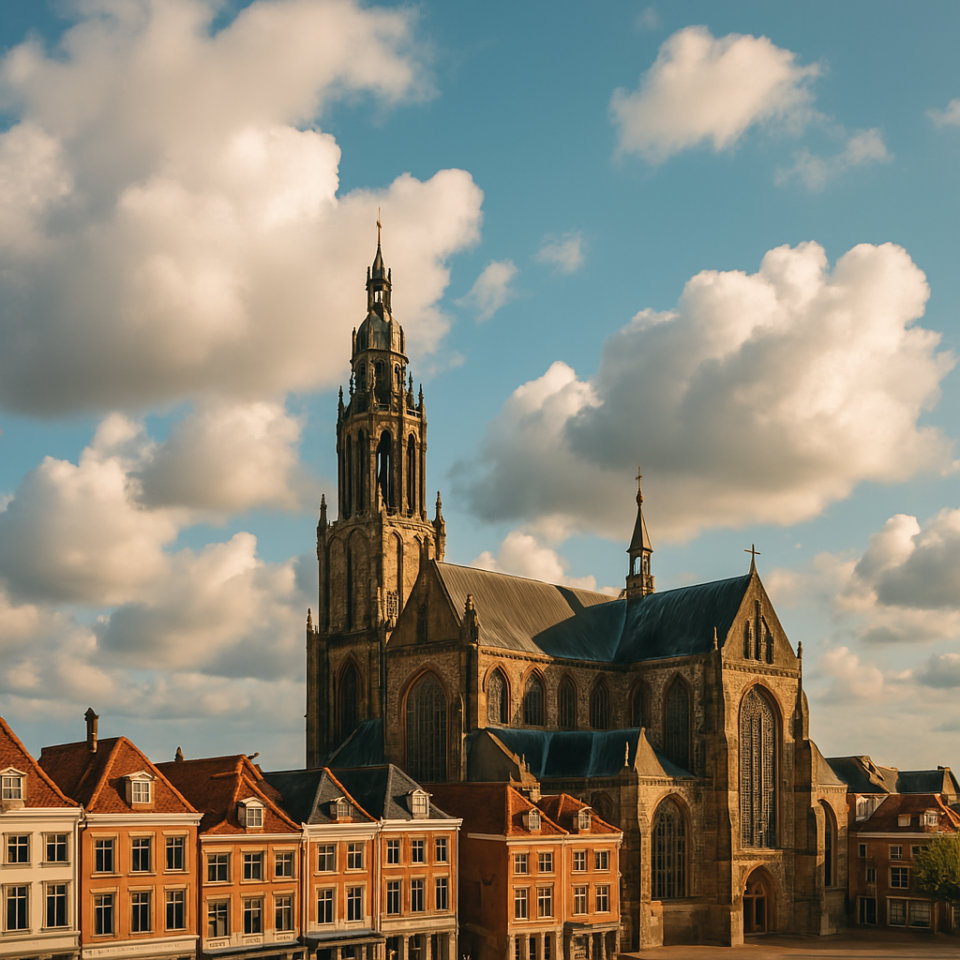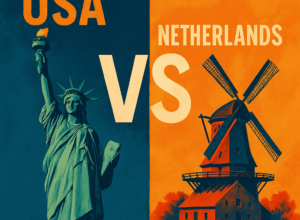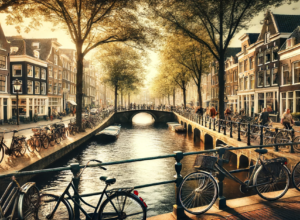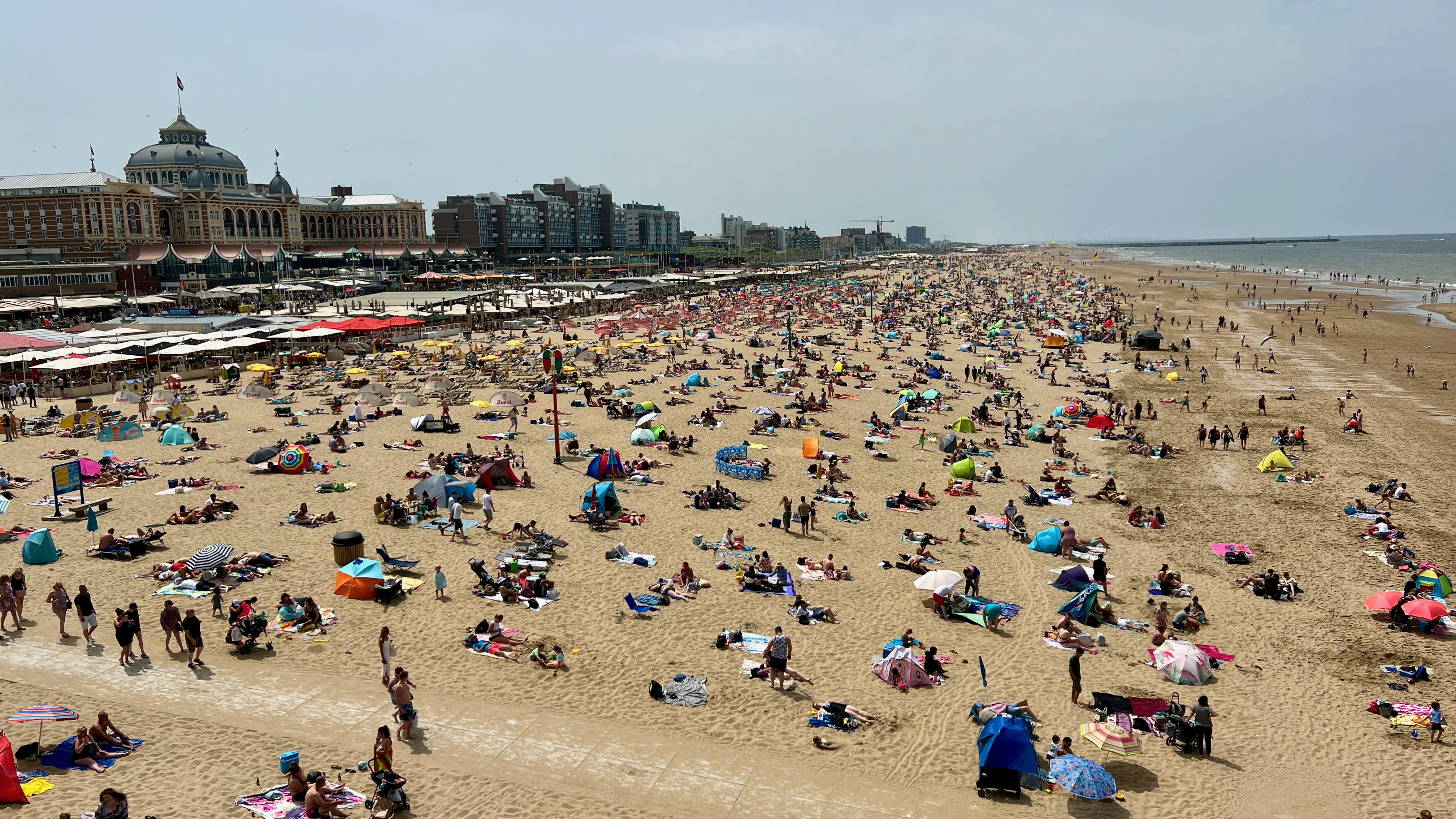When I first moved to the Netherlands, I didn’t give much thought to local holidays. I figured they’d be similar enough to what I knew back in the U.S.—maybe a few different names or dates, but nothing major.
I was wrong.
From bonfires that tower over the beach to fireworks that feel like a war zone, Dutch holidays don’t just mark time on a calendar—they take over the streets. And if you’re living here, it helps to know what’s coming. Stores close, transportation shifts, and the whole country changes pace.
Here’s a rundown of the major Dutch holidays—what they mean, when they happen, and what to expect if you’re an expat in the Netherlands.
New Year’s Eve & New Year’s Day (Oud en Nieuw + Nieuwjaarsdag)
December 31 & January 1
If you’ve only ever experienced NYE in the States—crowded bars, countdowns on TV, maybe a couple fireworks—you’re not ready for the war zone that is Oud en Nieuw.
Fireworks are technically banned for private use in many places, but enforcement is… let’s say relaxed. People stockpile them illegally for weeks. Kids, adults, your 80-year-old neighbor—everyone participates. It’s loud, chaotic, and honestly kind of impressive in its lawless unity.
Scheveningen’s Bonfire Battle:
In previous years, Scheveningen and Duindorp built giant bonfire towers, stacking pallets as high as apartment buildings in a kind of coastal pride competition. The fires have occasionally gotten out of control (one year, embers rained down on the beach, I’m told), and restrictions have been tighter lately—but the tradition still holds cultural weight.
January 1: Most stores, restaurants, and services are completely closed. Plan ahead. The whole country is basically hungover and silent. Luckily my gym is still open, although it’s a later start than usual.
King’s Day (Koningsdag)
April 27
This is the big one. Think of it like the Fourth of July, Mardi Gras, and a neighborhood garage sale all rolled into one.
Orange Everything:
Everyone wears orange—because the royal family’s name is “House of Orange.” You’ll see orange hats, wigs, sunglasses, full-body suits, boas, and face paint. If you’re not wearing orange, you’ll feel like an outsider.
Free Markets (Vrijmarkt):
It’s the one day a year when anyone can sell anything on the street without a permit. Families and kids lay out blankets and tables with old clothes, books, random kitchen gadgets—it’s half flea market, half treasure hunt.
Parties:
Big cities like Amsterdam, Utrecht, and Rotterdam become massive street festivals with live music, DJs, and boat parties. Public transport is jammed, and stores are mostly closed or running limited hours.
Liberation Day (Bevrijdingsdag)
May 5
It marks the day the Netherlands was liberated from Nazi occupation in 1945. But here’s the odd part from an American perspective: it’s only a mandatory day off every five years. So in most years, you’ll still see festivals and flags, but it’s not technically a public holiday for everyone.
Freedom Festivals:
Most major cities host live music and public events, especially in milestone years. The vibe is one of pride and gratitude, especially coming the day after Remembrance Day (May 4), which is a much more somber affair.
Good Friday, Easter, Ascension Day, Pentecost
March–June (Dates Vary Annually)
These holidays are religious in origin but still culturally significant, even in a mostly secular Dutch society. What makes them tricky is that some are public holidays and some aren’t—and observance can vary depending on region and employer.
Good Friday (Goede Vrijdag)
Not a national public holiday—but some schools and offices give the day off, especially in government or education sectors. For most people, it’s a normal Friday. But don’t be surprised if schedules feel lighter.
Easter Sunday & Monday (Eerste Paasdag & Tweede Paasdag)
Two full days of rest, and both are official public holidays. Most stores and services are closed on Easter Sunday, while some limited shops open on Monday.
Dutch Easter is low-key and family-oriented. Think brunch with eggs, spring-themed sweets, and paasbrood (a sweet bread with dried fruit and almond paste). There’s no Easter Bunny mania or pastel overload, just a calm weekend with chocolate eggs in foil wrappers and cozy meals.
Ascension Day (Hemelvaart)
Always falls 40 days after Easter, which lands it on a Thursday—and this is a public holiday.
Many people take “Hemelvaart weekend” and also take the Friday off, creating a four-day break known as a “brugdag” (bridge day). If you’re trying to travel, expect crowds and full trains. Shops and restaurants may be closed or running holiday hours.
Despite its religious roots, it’s mostly a springtime long weekend now.
Pentecost (Pinksteren)
Falls 50 days after Easter and spans two days:
•Eerste Pinksterdag (First Pentecost) – Sunday
•Tweede Pinksterdag (Second Pentecost) – Monday
These are national holidays, with Monday being the most noticeable. It’s another time for family, food, or a short getaway. Some cultural events and markets pop up, and you’ll find fewer people in the cities as they escape to the coast or countryside.
Sinterklaas
December 5 (with festivities starting mid-November)
Not technically a public holiday, but culturally, this one’s massive. Sinterklaas (think Santa) arrives by steamboat from Spain (yes, seriously), parading through towns with his helpers and handing out candy.
Kids put out shoes in exchange for treats, adults do elaborate gift exchanges with surprise poems, and bakeries go all in with pepernoten, chocolate letters, and speculaas.
To outsiders, it can look like an early Christmas knockoff. To the Dutch, it’s the main event for children.
Christmas (Kerstmis)
December 25 & 26
Yes, the Dutch get two full days of Christmas—Eerste Kerstdag and Tweede Kerstdag.
Day one is usually for close family.
Day two is for extended relatives, relaxing, or sometimes outlet shopping.
Don’t expect big public displays or hyper-commercialized décor. Dutch Christmas is quiet, candlelit, and focused on home. Think gourmetten (tabletop grilling), cozy living rooms, and slow meals that stretch into the evening.
Imported & Influenced Holidays
While the Dutch have their own strong calendar of traditions, a handful of American and international holidays have quietly crept into the culture—especially among younger people and in bigger cities.
Halloween
Not traditionally Dutch, but it’s gaining traction—mostly with children and in expat-heavy neighborhoods. Some shops and schools do small celebrations, and a few families go trick-or-treating, but it’s still low-key and scattered. You won’t find haunted houses or horror movie marathons on national TV.
Valentine’s Day
Definitely commercialized here, but very toned down compared to the U.S. You’ll see some heart-shaped candies and flower displays at Albert Heijn, and maybe a special dinner out, but no pressure. It’s more about a romantic gesture than a grand event.
Thanksgiving
Only really celebrated by Americans living here—but many specialty shops (like Albert Heijn XL or expat grocers) will stock turkeys and cranberry sauce in late November. Some restaurants even offer themed menus. If you’re feeling nostalgic, you can build a Thanksgiving here—but it takes effort.
New Year’s Resolutions
The concept exists, but the Dutch don’t take it nearly as seriously. Gym memberships spike like everywhere else, but there’s less pressure to completely reinvent yourself on January 1.
Other Notables
Remembrance Day (Dodenherdenking) – May 4
At 8 PM, the entire country goes still for two minutes of silence to honor those who died in WWII and other conflicts. It’s moving, powerful, and deeply respected.
Carnival – February (Southern Netherlands only)
In provinces like Limburg and North Brabant, Carnival is an explosion of costumes, drinking, and pure chaos before Lent begins. If you’ve never seen a Dutch businessman in full glitter drag on a Tuesday afternoon… just wait.
What Closes (and What Doesn’t)
Most major holidays mean total shutdowns—especially for grocery stores, banks, and government offices. Pharmacies and convenience shops (like Albert Heijn To Go) might stay open with limited hours.
Pro tip: Get the app for your local grocery chain. Most of them list holiday opening times in advance.
Public transport usually runs on a holiday or Sunday schedule. Plan for fewer trams and buses and earlier final departures.
Final Thought
Dutch holidays are slower, subtler, and sometimes completely unhinged (see: fireworks). But they’re woven into the rhythm of life here in a way that makes them feel earned. Once you’ve experienced a few, they stop being confusing—and start becoming yours, too.








